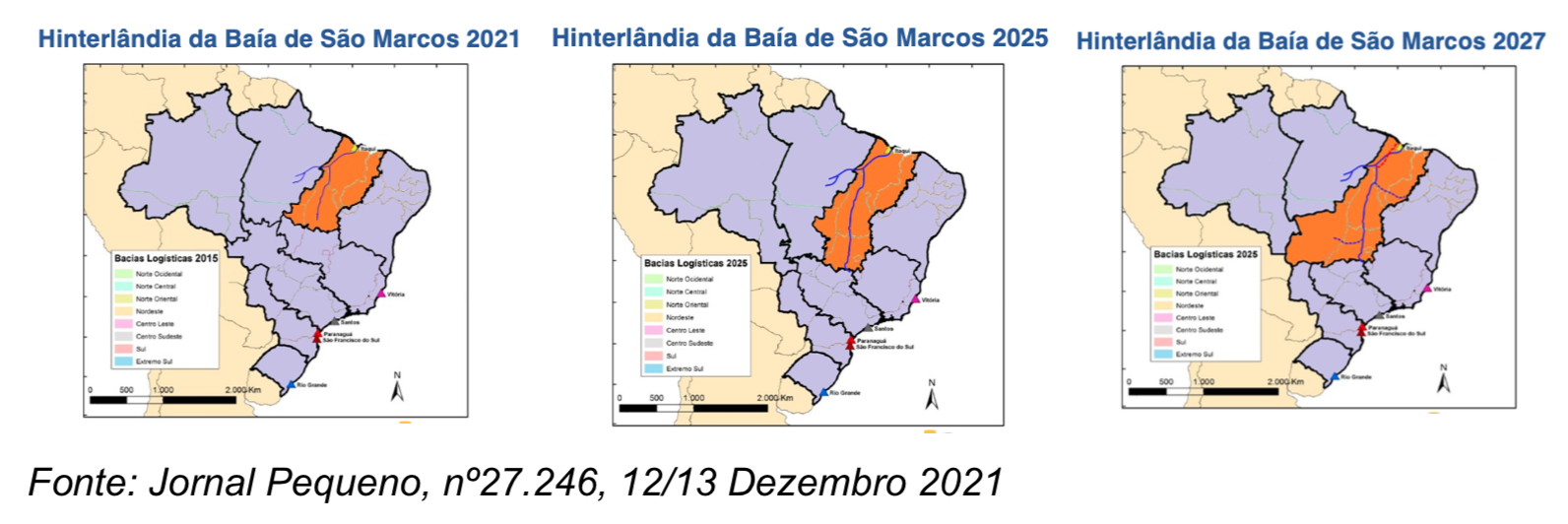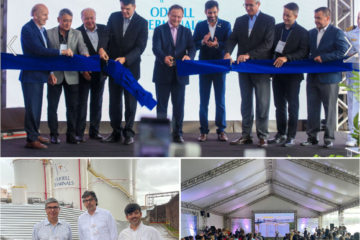New railroads pave the way for development in Maranhao, say experts
The authorization given by the Federal Government to six business groups for the construction and operation of new railroads in the Federal District and eight states, including Maranhão, moved the state’s political and business circles and was received with enthusiasm and expectations. The contracts with the Union, within the federal program Pro Trilhos, were signed on Thursday, 9, in a ceremony at the Ministry of Infrastructure (MInfra), with the presence of Minister Tarcísio de Freitas, by the companies Bracell, Ferroeste, Grão Pará Multimodal, Macro Desenvolvimento, Petrocity and Planalto Piauí Participações.
In Maranhão, the construction of two new railroads is planned. The first contract, signed by Grão Pará Multimodal, which manages the Alcântara Port Terminal (TPA), is for the project of a railroad from Alcântara to Açailândia, with 520 km of extension.
The railroad will be used to transport general cargo estimated at 50 million tons/year: dry bulk, liquid bulk, and containers (general cargo). It establishes the connection between the Alcântara Port Terminal (TPA) and the municipality of Açailândia, which is is an industrial iron exporter and has one of the largest cattle herds in Maranhão. It will have a connection with the North-South Railroad (FNS) North Branch and a junction with the Carajás Railroad (EFC). R$5.2 billion in investments and almost 100 thousand (99,519) direct, indirect jobs are projected.
The reportage of Jornal Pequeno, in Brasília, heard the executive-director of Grão Pará Multimodal, Paulo Salvador; the civil engineer, Urubatan Filho, a specialist in railroads, and the coordinator of the Maranhão Federal Congressional Caucus, Pedro Lucas Fernandes (PTB-MA). The two entrepreneurs, within a business vision, spoke the proposals and objectives – Alcântara Port Terminal (TPA) and the Alcântara-Açailândia railroad. Pedro Lucas, on the other hand, within a political vision, points out the expectations and support of the members of the congress from Maranhão for projects that will foster the economic and social development of the state.

With the railroad, the TPA will be a dynamizer of the exports of the Brazilian Arco Norte.
The executive director of Grão Pará Multimodal, Paulo Salvador, explains that the Alcântara Port Terminal (TPA) is a private infrastructure authorized under an adhesion contract signed with the Federal Government. It was the object of a vast set of studies and simulations that proved its unique characteristics in the scenario of existing and planned Brazilian ports.
“Besides being located in a sheltered place froout.m the coast, the São Marcos Bay with its deep waters, it has a railway connection of about 520 kilometers, which will connect it to the largest railroads in the Brazilian network; namely: North-South Railroad and Carajás Railroad,” he pointed out.
The Alcântara Port Terminal (TPA) natural draft, of -25 meters, will allow the terminal to operate the largest bulk carriers of today, “notably the Capesize, for grain transportation, and the Valemax, for iron ore, and to handle, as a whole, cargoes that can exceed 400 Mtpa, given the large dimensions of the off-shore and on-shore areas that the terminal has,” informed the entrepreneur.
Salvador evaluates that “Brazil’s international competitiveness depends on the price at which it manages to place its exports at the final destination and not the price at which the products arrive at Brazilian ports to be shipped. The price of transportation has to be competitive as a whole and not just within the national territory.”
“For this reason, the TPA will be an essential project to reduce the current transportation costs, both within the national territory, through the direct connection to the major national railroads, and through the use of large ships, such as the Capesize, to transport grains, which will significantly lower the cost of sea freight, as has been widely reported lately, by up to US$ 15/ton, according to studies by Esalq Log,” he emphasized.
Paulo Salvador highlights that the processes are already underway “to make important projects that will connect to the North-South Railroad a reality, which are the FICO, connecting Água Boa- MT, and the EF-232, connecting to Balsas- MA… and practically entering into operation the central stretch of the FNS, with 1,500 kilometers of extension. It is foreseen that these railroads will inject around 50 Mtpa of grains to the North-South Railroad, and that due to the fact that they are located north of the 16th parallel, it will make economic sense to transport them to a port of the Arco Norte”, he concluded.
Maranhão Railroad: more economic and social development
O JP also heard from civil engineer Urubatan Filho, a railroad specialist. He said that “Provisional Measure 1065/2021 rescued a regulatory model practiced in Brazil until the beginning of the 20th century.
According to Urubatan, “railroad authorizations allowed the implementation of the first Brazilian railroad in 1854, and throughout history it lost space to nationalized and concessionary railroads as of 1996 and 1997, such as the Carajás Railroad.
“EF-317 – Maranhão Railroad, the fruit of this new moment, will induce more economic and social development in Maranhão and in the cities, it will pass through, such as Peri Mirim, Governador Newton Belo, and São Francisco do Brejão, among others. This permanent track will need skilled professionals, familiar with railway concepts, who will emerge from technical schools and universities. The railroad will be an increasingly statewide agenda and will need the maranhense community to have its due prominence along with the Alcântara Port Terminal,” he observed.
“And it will not stop there: there are other railroads to follow the same path, such as the EF-232, between Porto Franco and Balsas; the part of the North extension of the North-South Railroad, between Açailândia and Barcarena/PA; and also the possibility of new railroads (could be for passengers as well) and new terminals for cargo transshipment. Welcome to the Maranhão Railroad”, concluded the engineer.
See original article here.
Published on Jornal Pequeno 12/12/2021.
SEE TOO
Inauguration event of the Terminal 1 expansion, Granel Química at the Port of Itaqui. An enormous satisfaction, to celebrate together a moment like...
Great meeting at the Portuguese Embassy in Brasilia with public and private entities talking about the future of the two countries and how to foster...
Exploring Port Sustainability and ESG Strategy with Professor Sérgio Cutrim We had the privilege of welcoming Professor Sérgio Cutrim to our...




